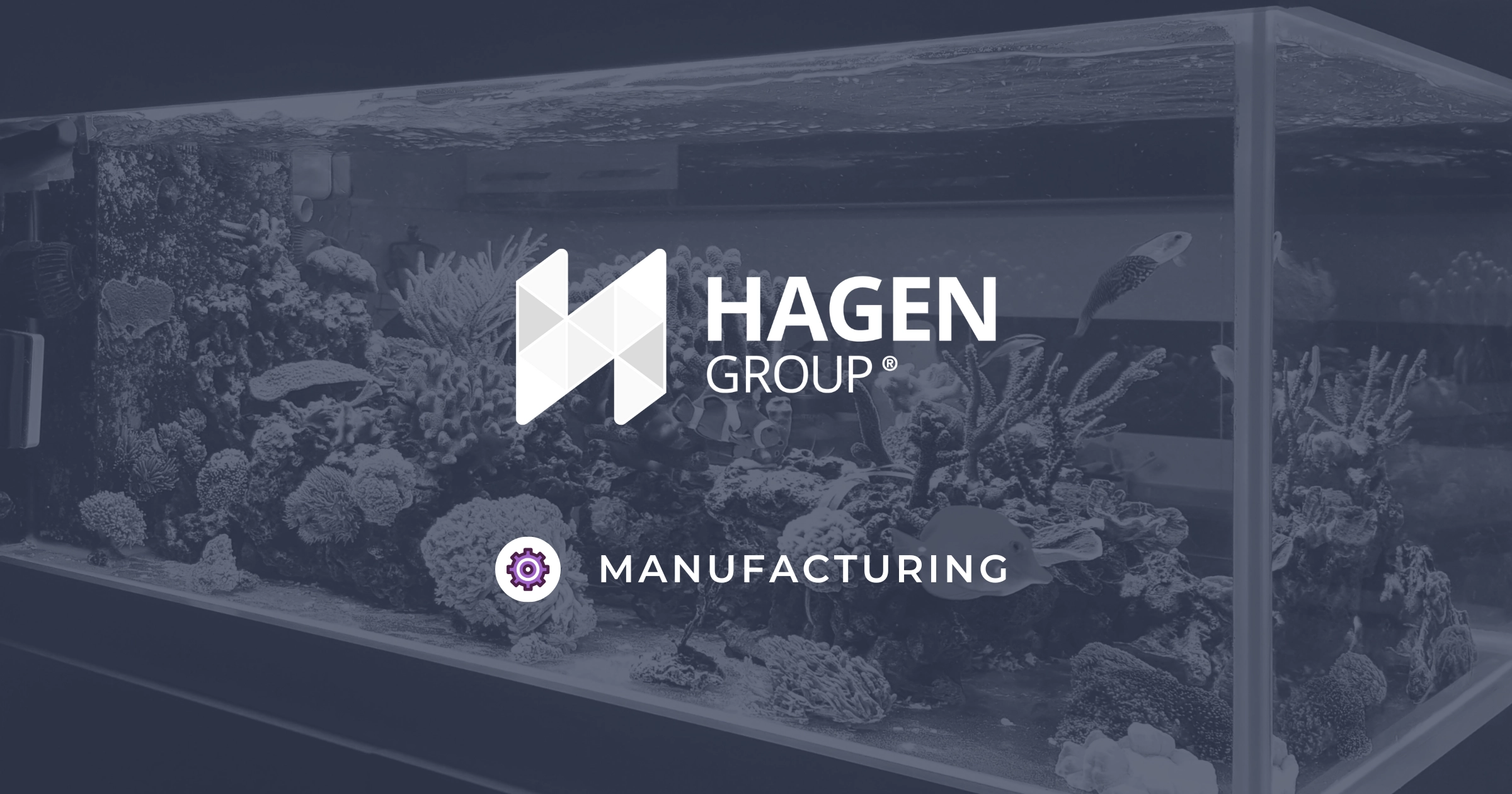I recently attended a major manufacturing conference, where digital transformation dominated every conversation. For a day and a half, we heard about operational efficiency, process automation, IT infrastructure overhauls, and data centralization.
But it wasn’t until lunch on day two that someone finally mentioned the customer.
That silence speaks volumes.
It reflects a broader issue that we see across the industry: many manufacturers approach digital transformation from a manufacturing efficiency standpoint rather than a strategic opportunity to rethink how we engage with customers.
That’s not just a missed talking point. It’s a missed growth lever.
And that pattern isn’t limited to manufacturing. Across industries, companies are pouring money into transformation initiatives—often without a clear line of sight to customer impact or business value.
Our research found that while two-thirds of organizations plan to increase investment in digital and AI tools, only 21% report seeing measurable ROI. It’s not the tech that fails—it’s using it to reinforce old ways of working instead of designing better ones.
70% of digital transformation initiatives fail to achieve their objectives—often because they over-focus on technology and underinvest in strategy and roadmap development.
– McKinsey
The Blind Spot in Your Digital Strategy
When manufacturers think about digital transformation, the conversation naturally gravitates toward operations. After all, the industry has built expertise around making things efficiently, consistently, and at scale.
But here’s the uncomfortable truth: While you’re focused on modernizing your internal operations, your customers’ expectations constantly evolve. They aren’t focused on your backend systems. They care about how easy (or difficult) it is to do business with you.
“I’ll do business with whoever helps me meet my deadline,” a manufacturing leader told me recently. “If you tell me in advance about delays, I can plan around them. If you tell me the day of, I’m finding a new supplier.”
The manufacturing organizations winning today aren’t just modernizing their operations—they’re reinventing how they engage with customers at every touchpoint.
Why Customer Strategy Gets Left Behind
Why does the customer perspective so often get sidelined in digital initiatives? Three reasons stand out:
- The legacy of product-centricity. Most manufacturers were built on product excellence, not service design. The muscle memory isn’t there.
- Siloed transformation. When digital projects are led exclusively by IT or operations, customer experience becomes an afterthought rather than a driver.
- Treating data as a technical challenge, not a strategic asset. When data initiatives focus on volume over strategic value, you end up with systems that store everything but reveal nothing.
The manufacturers breaking away from the pack are those treating their digital transformation as a business strategy, not just a technology upgrade.
The Rise of the Customer-Centric Manufacturer
The most forward-thinking manufacturers are fundamentally rethinking how technology enables customer relationships, adds value to customers, and provides sellers with better insights into customer accounts. They’re asking different questions:
- How can we use digital tools to give customers the transparency they need?
- What frictions exist in our current quote-to-cash process?
- How can we connect data across systems to anticipate customer needs?
- Where are our teams spending time that doesn’t add value to customers?
- How does AI fit into my strategic roadmap?
These questions lead to different priorities and different outcomes.
Data-Driven Decision Making: The Customer Edition
I can’t tell you how many manufacturing clients struggle to make critical decisions because they lack visibility into their customer data. They can tell you everything about their production line efficiency, but almost nothing about why customers choose them or why they leave.
This isn’t just a reporting problem. It’s a strategic vulnerability.
80% of business leaders say data is critical to decision-making, but many still struggle to use it effectively due to fragmented systems and lack of actionability.
– Salesforce
Customer-centric data modernization starts with a simple premise: collect and connect the data that enables your teams to make better decisions about how to serve customers.
This might include:
- Quote and pricing history → faster, more accurate quoting
- Order status and tracking → real-time visibility
- Service and support history → personalized issue resolution
- Customer-specific preferences → stronger relationships
- Product usage patterns → proactive maintenance recommendations
- Engagement signals → early warning of churn risk
The manufacturers gaining an edge understand that data integration and data visibility aren’t just IT problems. They are business capabilities that demand strategic leadership. They approach data modernization with a clear vision of what customer outcomes they want to enable, then work backward to identify the specific data points needed.
Explore five trends in data modernization that should shape your strategy →
Start with the Customer Journey, Not the Technology
Before investing in any digital initiative, take time to map your customer’s journey:
- Where do customers hit friction?
- Where do handoffs between teams drop the ball?
- What does a great experience look like across quoting, fulfillment, service, and renewal?
- Where does my customer experience inefficiency when communicating with us as their manufacturer?
Most transformation initiatives start with internal process mapping. But without customer journey mapping as a companion exercise, critical friction points remain unaddressed.
This mapping doesn’t just expose broken experiences; it gives you a blueprint for where technology can make the biggest impact.
Too many organizations rebuild old processes on a new digital foundation. They invest millions only to recreate the same customer experience that was already falling short. The manufacturers getting the most ROI from digital transformation are using it to fundamentally rethink how they sell, serve, and support customers. They’re not just digitizing—they’re differentiating.
Learn more about our Manufacturing Industry Solutions →
Solving the Right Problems
Two pain points show up in nearly every manufacturing organization:
Quoting complexity: Weeks-long turnaround times mean missed revenue. A modern system should accelerate quote-to-cash, not replicate old delays on a new platform.
Transparency gaps: B2B buyers now expect B2C-style updates. They don’t just want a delivery date; they want visibility into every step that gets them there.
“If you don’t bring your customer strategy along during your digital transformation, you’re just rebuilding old problems on a new system.”
These aren’t just annoyances. They’re growth limiters. And they’re exactly the kind of problems that get overlooked when digital transformation is treated as an IT exercise rather than a business strategy.
Designing for Every Customer Tier
Most manufacturers design systems around their largest revenue drivers, for good reason. The top 20% of customers often account for 80% of revenue. But that focus leaves the rest of your customer base underserved and inefficiently managed.
Digital transformation is an opportunity to fix what’s been overlooked, streamlining how you support mid-tier and lower-tier customers without overextending your teams.
- Automate where you can (status updates, low-touch requests, reorders)
- Redirect human effort to where it counts most (high-value customers, complex sales, escalations)
- Leverage AI to create efficiencies for your sales and service teams
With the right design, you don’t just improve margins. You elevate the experience without adding headcount.
Learn how leading manufacturers are building customer loyalty across segments →
Measuring What Matters
Going live with new technology is just one milestone. The real measure of success is whether your investment improves outcomes that matter:
- Quote speed and accuracy
- Customer retention and lifetime value
- Forecasting precision
- Service quality and efficiency
- Cross-sell and upsell effectiveness
- Digital engagement metrics
Too often, manufacturers judge digital initiatives by technical criteria—such as uptime, stability, and feature completeness—rather than business outcomes. The most sophisticated organizations build measurement frameworks that connect technical metrics to customer impact and financial performance.
When you align customer strategy to your digital investment, you unlock faster ROI and compound value that doesn’t stop at implementation.
The Path Forward
As you plan your digital transformation, ask yourself: Are we truly modernizing the customer journey or just upgrading our backend?
The manufacturers who lead their industries in the coming decade won’t just be the ones with the most advanced operations. They’ll be the ones who used digital tools to make it radically easier for customers to do business with them.
Your operational excellence got you this far. Your customer excellence will take you to the next level.
Ready to Make Your Digital Transformation Work Harder for Your Customers?
Take the first step:
Evaluate your Salesforce customer experience maturity with our free Coastal Compass Assessment and discover where you have opportunities to connect strategy, systems, and service in a way that drives real value.
Or schedule a conversation with a Coastal manufacturing expert to explore what a customer-driven digital strategy could look like for you.
Author: Mary Beth Wright, Senior Vice President, Manufacturing


